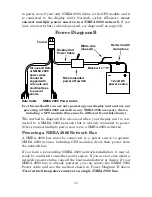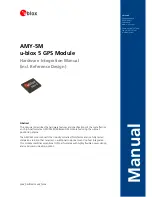
34
If you do need to power your NMEA 2000 bus, attach the NMEA 2000
Power cable to an accessory switch as indicated in power diagram A on
page 32. The NMEA 2000 Power cable's red wire should be attached
(with provided 3-amp fuse) to the positive (+) terminal. The NMEA
2000 Power cable's black and shield wires should both be attached to
the negative (–) terminal.
WARNING:
The NMEA 2000 network bus is always on and constantly
drawing power. You must connect NMEA power to a
switched power source so you can turn off the network
when not in use. Failure to connect to and use a power
switch will drain your boat battery, which could stop
your boat's operation.
GPS Antenna/Receiver Module
The LMS-520c and LMS-525cDF packages include the LGC-3000 GPS
module. This device contains the unit's external antenna and receiver
for GPS and WAAS signals. The antenna/receiver module comes with a
15-foot extension cable. This module can be mounted on a flat surface
or pole, or an optional magnet is available for temporary mounting on
any ferrous surface.
You need to select an antenna installation location that has a clear, un-
obstructed view of the sky. After the module is installed, connect it to the
unit. The LGC-3000 can communicate with your GPS unit either directly
(using the supplied extension cable) or through a NMEA 2000 network.
LGC-3000 Module, bottom view (left) and top view (right).
NOTE
See the module’s instruction sheet, publication part number 988-
0154-651, for complete installation instructions.
Summary of Contents for LMS-520C
Page 10: ...viii Notes ...
Page 22: ...12 Notes ...
Page 56: ...46 Notes ...
Page 114: ...104 Notes ...
Page 202: ...192 Notes ...
Page 216: ...206 Notes ...
Page 246: ...236 Notes ...















































